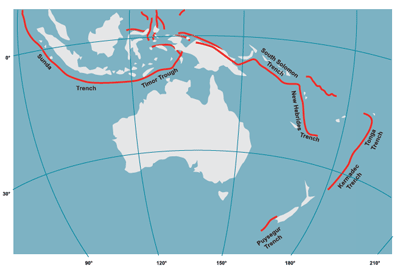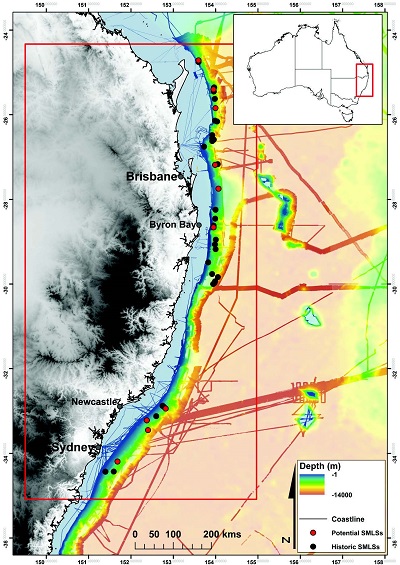What is a tsunami?
Tsunamis are waves caused by a sudden movement or displacement of water such as by earthquakes, underwater landslides and volcanic eruptions.
A tsunami is a series of waves, and the first wave is often not the largest. Sometimes a tsunami can be observed for many hours to days after the initial event.
Tsunami waves may not be as tall as typical beach surfing waves but they will have much more energy and power than beach waves.
If it crosses the shore a tsunami has the potential to cause more destruction than a storm surge.
Tsunami in Queensland
The most common cause of tsunami is an underwater earthquake. Queensland's coastline is exposed to a range of earthquake sources across the Pacific that have the potential to generate tsunami.

Several significant tsunamis have been observed along the Queensland coast resulting in communities retreating to higher land.

Warnings
Australia has an independent tsunami warning service to advise the media, public and emergency authorities of any tsunami threat. The Joint Australian Tsunami Warning Centre issues tsunami warnings for Australia and provides at least 90 minutes warning.
What might happen?
The most likely threat for the Australian community is a marine and immediate foreshore threat. This includes potentially dangerous rips, waves and strong ocean currents in the marine environment and the possibility of some localised overflow onto the immediate foreshore.
In Australia, people have been rescued during these tsunami threats as a result of being drawn out to sea. Small marine craft have also been damaged when moored closely to shore, and port operations impacted.
The land inundation threat is less likely for the Australian community. This could include major land inundation for low-lying coastal areas and flooding.
Australia has been fortunate to have recorded land inundation only on rare occasions in modern times. For more information visit Geoscience Australia

Be prepared:
- have a plan and include a list of safe places you can go if you evacuate.
- have an emergency kit on hand, including a battery operated radio, torch and spare batteries
- keep a list of emergency numbers handy
- familiarise yourself with Queensland’s tsunami evacuation areas if you are visiting the Queensland coast.
- Prepare your pets
Be alert:
- The joint Australian Tsunami Warning Centre may issue official tsunami warnings through media (radio, television, internet), police and emergency authorities, lifeguards or surf lifesavers. Listen carefully.
- You may also, but not always, experience natural warning signs of a tsunami when you are on or near the coast in Australia or overseas. You may feel the earth shake, see the ocean drop or recede, or hear unusual roaring sounds from the ocean.
Stay safe if a warning is issued:
- If you are on or near the beach, immediately move inland or to higher ground. If you can't move inland, seek shelter in the upper levels of a sturdy multi-storey building
- Walk to safety to avoid traffic jams.
- Take only essential items that you can carry (for example, important documents, medical records, medication).
- Check that your neighbours have received the advice.
- If your boat is in deep ocean, maintain your position until further advised. If your boat is moored or in shallow water, secure your vessel and move inland or to higher ground.
- Continue to follow instructions from the relevant state or territory emergency authority. They will inform the public when it's safe to return to the affected area.
Keep informed:
- If you receive an official tsunami warning, listen to local radio announcements, TV announcements and emergency service messages.
- For further updates on the tsunami threat, you can visit the Bureau of Meteorology's Tsunami Warning Centre or call 1300 TSUNAMI (1300 878 6264).
- For tsunami assistance, call State Emergency Service on 132 500.